Welcome to my Indian Silk Sarees where tradition meets elegance. celebrating the timeless beauty of silk sarees. making up the perfect gift for the special woman in your life.
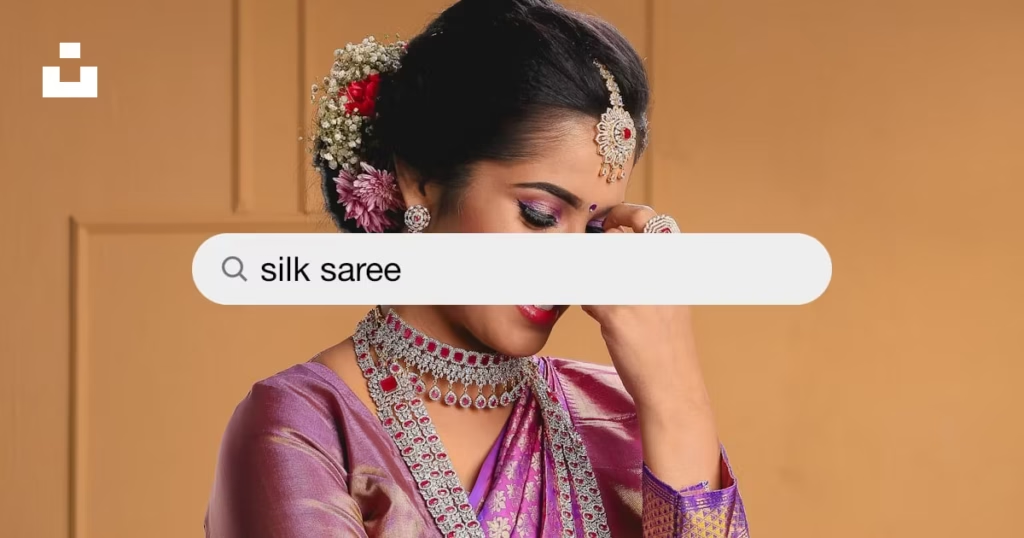
The history of silk sarees in India is a rich shade woven with tradition, art, and cultural significance. Dating back thousands of times, silk sarees have been an abecedarian aspect of traditional Indian attire, embodying the tradesman and heritage of various regions across the country.
These indigenous variations not only illuminate the diversity of Indian culture but also reflect the original customs and practices associated with silk weaving. The cultural significance of silk sarees extends beyond bare fashion; they constantly play an essential part in observances, festivals, and significant life events analogous to marriages. Each drape tells a story — of heritage, identity, and art — making the silk saree an enduring symbol of India’s rich cloth heritage.
Indian silk sarees are the perfect destinations for all the sarees lovers.the beauty of traditional Indian sarees.indian silk sarees specialise in sourcing for our customers the highest quality of silk sarees.silk sarees are of cultural significance.
Types of silk sarees
Indian silk sarees are famed for their exquisite trades and rich cultural heritage, making them a chief in the wardrobes of multitudinous. Also,’s a comprehensive overview of some of the most celebrated types of Indian silk sarees.
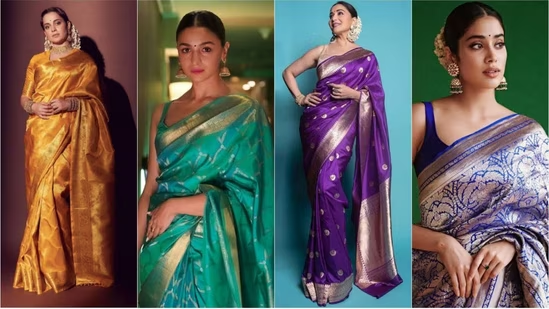
- Banarasi silk sarees
- Kanchipuram silk sarees
- Mysore silk sarees
- Chanderi silk sarees
- Assam silk sarees
- Tussar silk sarees
Banarasi silk sarees ;Hailing from Varanasi, Banarasi silk sarees are luxurious and beautifully crafted with intricate gold and silver zari work.Generally woven with gold or tableware vestments, these sarees constantly showcase intricate floral and paisley designs, making them a popular choice for marriages.
It’s special for all the wedding events and special occasions.
Kanjeevaram Silk sarees ; Kanjeevaram Silk sarees, also called Kanjeevaram Sarees, are traditional sarees made in Kanjeevaram , Tamil Nadu. They are woven with pure mulberry silk and zari (gold or silver threads). Kanjeevaram Silk sarees are vibrant, durable, and known for their rich texture, heavy borders, and traditional designs, making them perfect for weddings and festive occasions.
Mysore silk sarees ; mysore silk sarees are lightweight, and elegant, mysore silk sarees are smooth and shiny and feature plain design and rich border.Produced in Karnataka, these sarees come in various colors and constantly feature minimalistic designs that illuminate the beauty of the silk itself.making the perfect for both tradition and modern occasions.
Chanderi silk sarees ; Originating from Madhya Pradesh, chanderi silk sarees are lightweight and soft,made from silk and cotton making them elegant and perfect for casual or festive wear.Known for their sheer quality and fine embroidery work, Chanderi sarees constantly incorporate traditional motifs like peacocks or flowery patterns.
Assam silk sarees ; assam silk sarees especially for muga silks, are famous for their natural golden shine and very soft, representing assam rich culture.perfect for the traditional and festivals.
Tussar Silk Sarees ; Tussar silk is known for its unique texture and natural golden tincture. These sarees are primarily produced in Bihar and West Bengal, featuring hand-painted or block-published designs that reflect traditional Indian art forms.
Mastering the art of choosing the perfect silk saree for any occasion

Choosing the perfect silk saree for any occasion involves a thoughtful approach that considers colorful factors, including styling tips, occasion- grounded selection, draping ways, and color and pattern choices.
When opting a silk saree, it’s essential to consider the occasion. For formal events similar to marriages or carnivals, rich colors like deep red or royal blue with intricate patterns can make a striking statement. Again, for casual gatherings or day events, lighter tones with minimum embellishments may be more applicable.
Draping ways also play a pivotal part in how the saree is perceived. Traditional drapes like the Nivi or Bengali style can enhance fineness and grace. Experimenting with ultramodern draping styles can add a contemporary twist to your look.
Incipiently, color and pattern choices are vital in reflecting your particular style while aligning with the event’s theme. Floral patterns may suit summer fests, while geometric designs could be ideal for further ultramodern occasions. By considering these rudiments precisely, you can ensure that your silk saree not only fits the occasion but also showcases your unique personality beautifully.
Styling tips of sarees
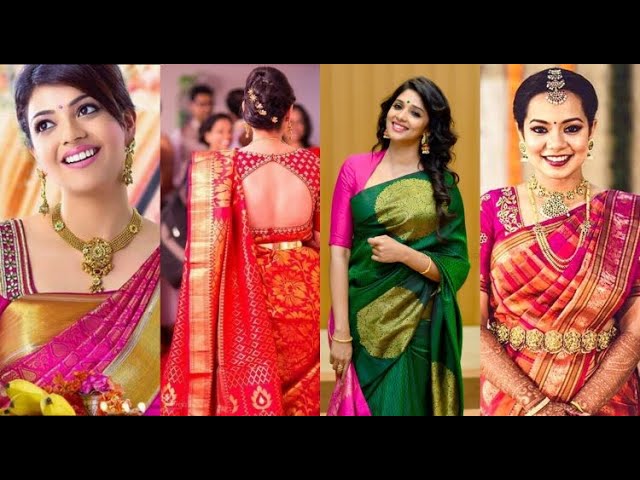
- Suggest blouse designs
- Accessorizing ideas
- Hairstyle recommendations
- Draping Styles
Suggest blouse design
- Contrast Colors: Pair your silk saree with a blouse in a contrasting color for a bold look. For instance, a gold blouse with a red saree.
- Embroidered Blouses: Opt for blouses with intricate embroidery or stonework to add a festive touch.
- Modern Styles: Experiment with halter necks, boat necks, or puffed sleeves to blend tradition with modernity.
Accessorizing ideas
- Jewelry:Pair heavy Kundan, temple jewelry, or gold jewelry with traditional silk sarees.For a minimalist look, use statement earrings or a choker.
- Hair Accessories: Adorn your hair with gajra (flower garland) for a classic Indian look.
- Bags: Carry a potli bag or a small clutch that complements the saree
Hairstyle recommendations
- Bun with Gajra: A neat bun adorned with flowers is a timeless option.
- Braids: A traditional braid with hair accessories is great for festive occasions.
- Loose Curls: For a modern look, go for side-swept loose curls.
Draping Styles
- Traditional Drapes: Stick to classic draping styles like the Nivi drape or Bengali drape for a formal look.
- Modern Drapes: Try open pallu draping or pant-style draping for a contemporary twist.
- Pleats and Fall: Ensure the pleats are crisp and the fall of the saree is neatly ironed for a polished look.
Care tips for silk sarees

- Washing
- Storing
- Ironing
- Handling
- General Maintenance
Washing
Dry Cleaning Preferred: Always opt for dry cleaning to preserve the saree’s texture and color.
Gentle Hand Washing:If washing at home, use cold water and a mild detergent specifically for delicate fabrics Avoid wringing or twisting the saree.Rinse gently and dry in shade.
Storing
Fold with Care: Fold the saree neatly and store it in a cotton or muslin cloth to allow air circulation and prevent moisture buildup.
Avoid Metal and Plastic: Do not store silk sarees in plastic bags, as they can trap moisture and lead to mildew.
Air Occasionally: Take the saree out of storage every few months to air it and refold to prevent permanent creases.
Ironing
Low Heat: Always iron on low heat using a cotton cloth or press the saree on the reverse side to avoid damaging the silk or zari work.
Steam Iron: A steam iron can help remove wrinkles without damaging the delicate fibers.
Handling
Avoid Sprays: Do not use perfumes, deodorants, or hairsprays directly on the saree, as they can cause stains.
Limit Accessories: Be cautious with sharp jewelry that may snag the fabric.
General Maintenance
Spot Cleaning: Address spills or stains immediately to prevent permanent marks.
Rotate Usage: If you own multiple silk sarees, rotate their usage to avoid wear and tear on any single piece.
Where to Buy Authentic Indian Silk Saree Collections Online and Offline
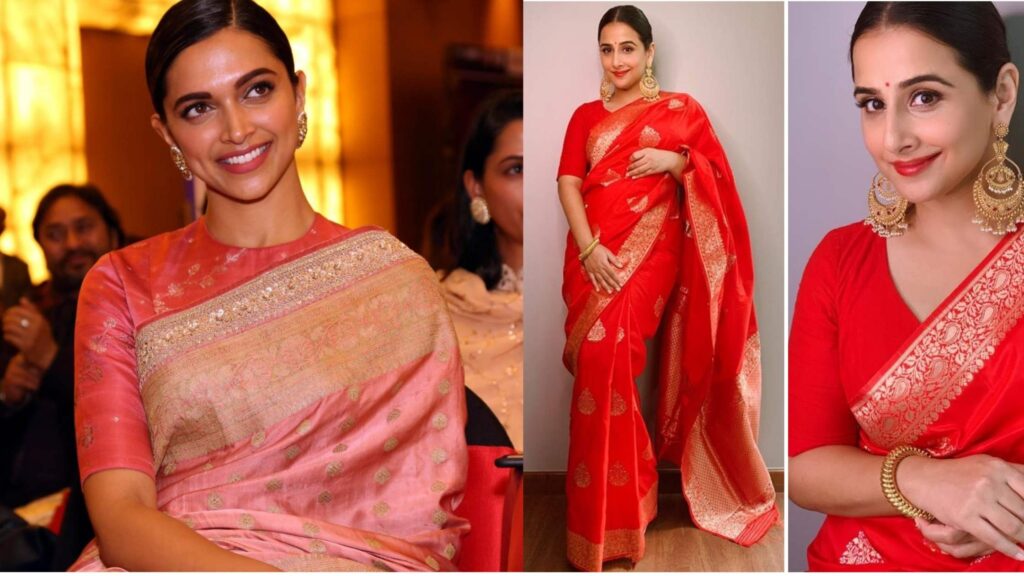
When it comes to purchasing authentic Indian silk sarees, both online and offline avenues offer a plethora of options. For those who prefer the convenience of shopping from home, several online stores stand out as the best destinations for silk sarees. Websites like Fabindia, Nalli Silks, and Utsav Fashion are renowned for their extensive collections that showcase traditional craftsmanship while ensuring authenticity.
On the other hand, if you enjoy the tactile experience of shopping in person, exploring local markets can be equally rewarding. Cities like Varanasi and Kanchipuram are famous for their vibrant silk saree markets, where you can find authentic brands and designers showcasing their finest creations. Visiting these local markets not only allows you to appreciate the intricate designs up close but also allows you to interact with artisans who can share stories behind each piece.
Whether you choose to shop online or explore local markets, being aware of reputable brands will enhance your experience in finding that perfect silk saree that embodies elegance and tradition.
key features of silk sarees:
- Luxurious Texture: Silk sarees have a smooth, shiny, and soft texture, making them highly comfortable to wear and visually appealing.
- Rich Colors: Silk sarees are available in vibrant, deep colors such as red, gold, royal blue, and green, often with contrasting borders and intricate designs.
- Intricate Designs: Silk sarees feature detailed and elegant designs such as floral patterns, paisleys, geometric motifs, and even mythological stories, depending on the regional style.
- Zari Work: Many silk sarees have borders or motifs woven with zari (gold or silver thread), adding a touch of luxury and opulence.
- Lightweight: Despite their richness and elegance, many silk sarees, like Tussar and Chanderi, are lightweight and breathable, making them comfortable for long wear.
- Durability: Silk is a natural fiber that is both strong and durable, meaning silk sarees can last for generations if properly cared for.
- Sheen and Gloss: Silk naturally has a beautiful sheen that catches the light, adding to the saree’s luxurious appeal.
- Elegant Draping: The stiffness of some silk fabrics allows the saree to drape in a way that accentuates the wearer’s figure, creating a graceful and elegant look.
- Versatility: Silk sarees are suitable for various occasions, from weddings and festivals to formal and ceremonial events.
Tips for buying silk sarees:
Check the Fabric: Ensure it’s made of high-quality silk, and look for authenticity markers like the Silk Mark label.
Choose the Right Occasion: Pick heavier, ornate silk sarees with zari work for weddings and festivals, and lighter ones for casual or semi-formal occasions.
Examine the Weave: Different regions specialize in unique weaves like Kanjeevaram, Banarasi, or Tussar. Choose one that suits your style and preferences.
Consider the Color: Pick a color that compliments your skin tone and is suitable for the occasion. Bright colors like red and gold are traditional for weddings, while pastel shades work for daytime events.
Inspect the Zari Work: Ensure the zari is not too rough or artificial. Real zari has a smooth, shiny texture.
Check for Fading: Look for signs of color fading, especially in lighter areas or on the pallu. High-quality silk should retain its vibrancy.
Feel the Weight: Heavy silk sarees with intricate zari work are ideal for formal occasions, but lighter options are more comfortable for daily wear.
Matching Accessories: Consider how the saree will pair with accessories like jewelry, footwear, and handbags to complete your look.
Try Before You Buy: If possible, try the saree on to ensure it fits well and drapes beautifully. This will help you decide if it’s the right choice.
Care Instructions: Make sure you understand how to care for your saree, as silk requires dry cleaning and proper storage to maintain its beauty.
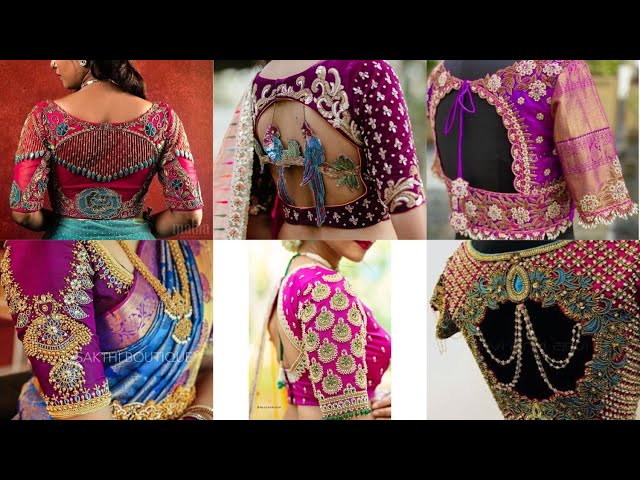
How to select the matching accessories in silk sarees
Selecting matching accessories for a silk saree is essential to enhance its beauty and complete your look. Here’s a detailed guide on how to choose the right accessories based on your saree’s style, occasion, and personal preferences:
1. Jewelry
Jewelry is one of the most important accessories when styling a silk saree. The choice of jewelry depends on the fabric, design, and occasion of the saree.
- Gold Jewelry: If you’re wearing a traditional saree like a Kanjeevaram, Banarasi, or Paithani with intricate zari work or rich borders, gold jewelry is a perfect match. Opt for statement pieces like heavy gold necklaces, chandbalis (traditional earrings), and kadas (bracelets) to complement the opulence of the saree.
- Silver Jewelry: For lighter silk sarees such as Mysore silk or Tussar silk, silver jewelry adds a refined, understated elegance. Consider silver necklaces, stud earrings, and delicate bangles for a more subtle yet chic look.
- Pearl Jewelry: Pearls work well with almost all types of silk sarees. Especially those in light pastel shades or simple designs. A string of pearls or pearl-studded earrings can enhance the elegance of the saree without overpowering the look.
- Precious Stones: If your saree is simple but you want to add a pop of color. You can pair it with jewelry adorned with precious stones like ruby, emerald, or sapphire. These stones go particularly well with solid color sarees like Mysore silk or Tussar.
2. Footwear
Your choice of footwear should balance comfort and style while complementing the richness of your silk saree.
- Traditional Footwear: Kolhapuris, mojris, or jootis are traditional choices that work beautifully with sarees. Especially those worn for festivals, weddings, or cultural events. These shoes often have intricate designs and can enhance the traditional vibe of sarees like Kanjeevaram, Banarasi, or Patola.
- Heels: If you’re wearing a formal or modern silk saree, such as a Chanderi or Mysore silk. High stiletto heels or block heels can add height and elegance while keeping the look contemporary.
- Flats or Sandals: For lighter silk sarees, such as those made from Tussar or Chanderi Comfortable flats or embellished sandals can be a great choice, offering both comfort and style.
3. Bags and Clutches
The right bag can elevate the look of your silk saree while being functional.
- Traditional Clutches: For formal events like weddings or festive occasions Go for a clutch or potli bag in silk, brocade, or velvet that complements the saree. If your saree is richly embroidered or has heavy zari work. Choose a simple and elegant clutch to avoid overwhelming the look.
- Metallic Bags: A gold or silver metallic clutch works well with sarees in neutral colors or with lighter zari work. As it complements without taking attention away from the saree.
- Embellished Bags: For a more contemporary or casual look with silk sarees. Choose a bag with beadwork, embroidery, or mirrorwork that ties into the design of your saree. Especially if you are wearing a simpler, modern-style silk saree.
4. Hair Accessories
Your hairstyle and the accessories you choose can enhance the overall look of your silk saree.
- Hair Clips and Pins: For traditional sarees, adorn your hair with traditional hairpins, flowers, or jeweled clips to keep it elegant and cohesive. Gajra (a string of jasmine flowers) is a classic addition to traditional sarees like Kanjeevaram and Banarasi.
- Headpieces: For very grand occasions like weddings. A maang tikka or headpiece can be worn with your silk saree to add royalty and sophistication. This works especially well with sarees that have a heavy pallu or intricate work.
- Simple Hair Bands: If you’re going for a more casual or modern look. Consider a simple jeweled hairband or bobby pins to keep your hair neat while adding a touch of sparkle.
5. Belts
- Saree Belts: A modern trend is wearing a saree belt with silk sarees. Especially with lighter sarees or sarees with minimalistic designs. A metallic belt or a fabric belt can add a chic touch and define the waist, creating a contemporary silhouette.
6. Shawls or Dupattas
- If the weather is cooler or you want to add more layers. A silk shawl or dupatta can be a beautiful addition to your outfit. For example, a chiffon or georgette dupatta works well with Mysore silk sarees, adding elegance without overpowering the look.
7. Makeup
- Natural Makeup: For silk sarees in lighter shades or casual styles, it’s advisable to opt for a natural makeup look with a fresh face, neutral eyeshadows, and soft lips. This, in turn, not only enhances the overall look but also helps balance the elegant simplicity of the saree.
- Bold Makeup: For heavy sarees like Kanjeevaram or Banarasi. Where the saree itself is ornate and vibrant, it’s best to opt for a bold makeup look. Specifically, go for dramatic eyes with bold eyeliner, shimmer, or a smoky eye. Along with a bold lip color like red or deep pink, which will beautifully complement the richness of the saree.
8. Saree Draping Style
- Depending on the silk saree and the occasion, the way you drape your saree can significantly impact your overall look. A traditional drape for weddings or formal events may involve pleating and tucking the pallu in a specific way to enhance the embroidery and zari work. On the other hand, for a more contemporary, modern look, you can experiment with a belted drape or a Pant-style saree drape. Particularly for silk sarees like Tussar or Chanderi.
Embrace Elegance with Indian Silk Saree Collections in Your Wardrobe Today!

50% off all sarees


